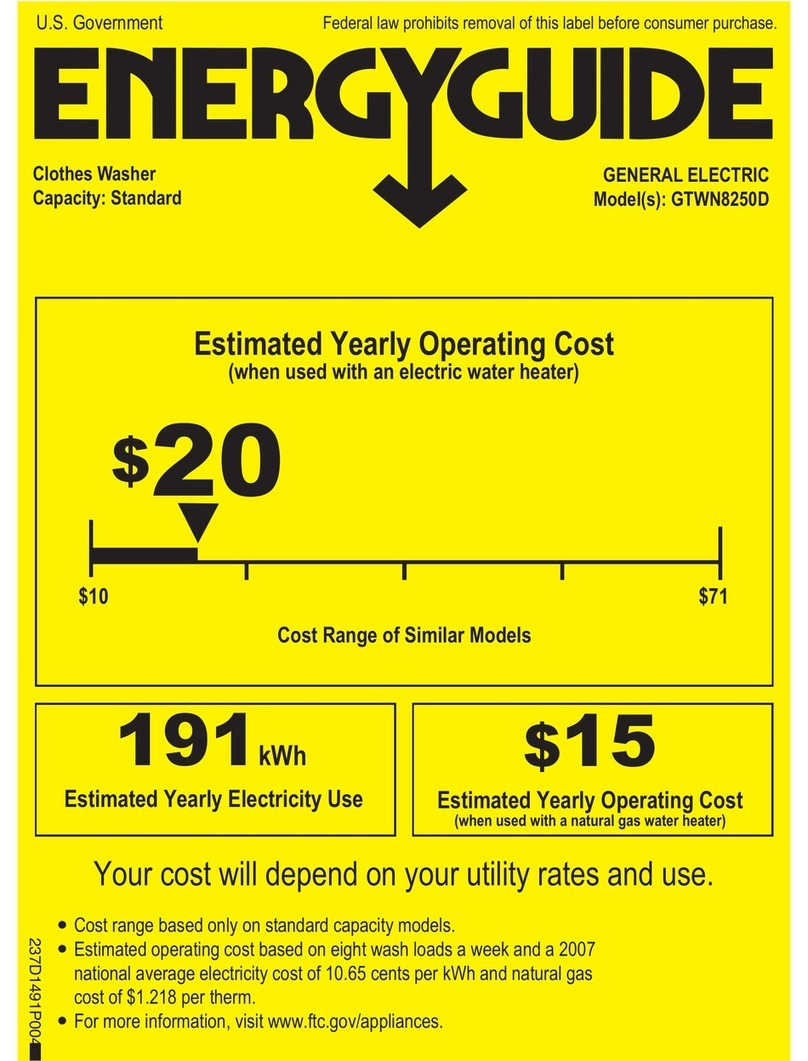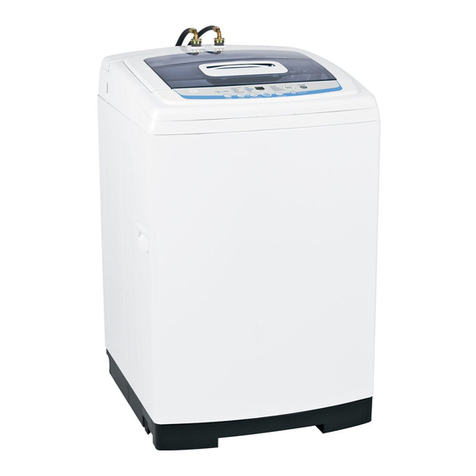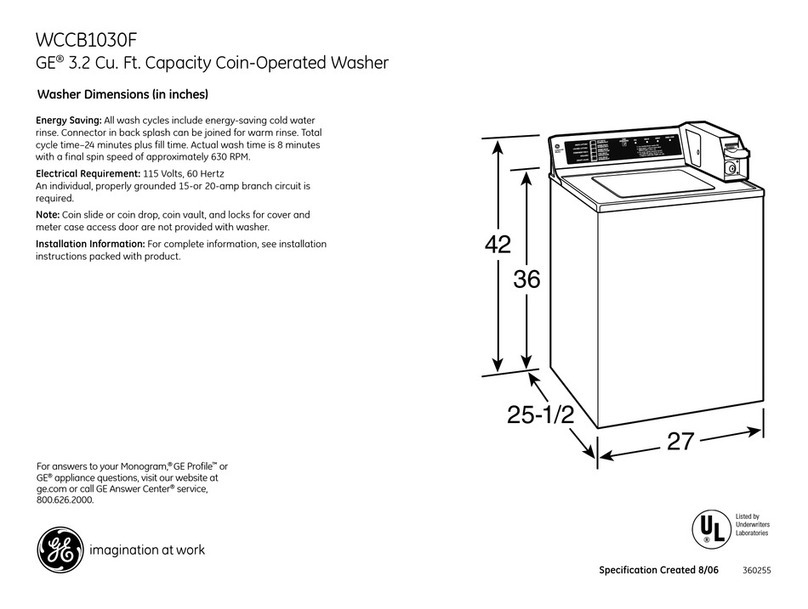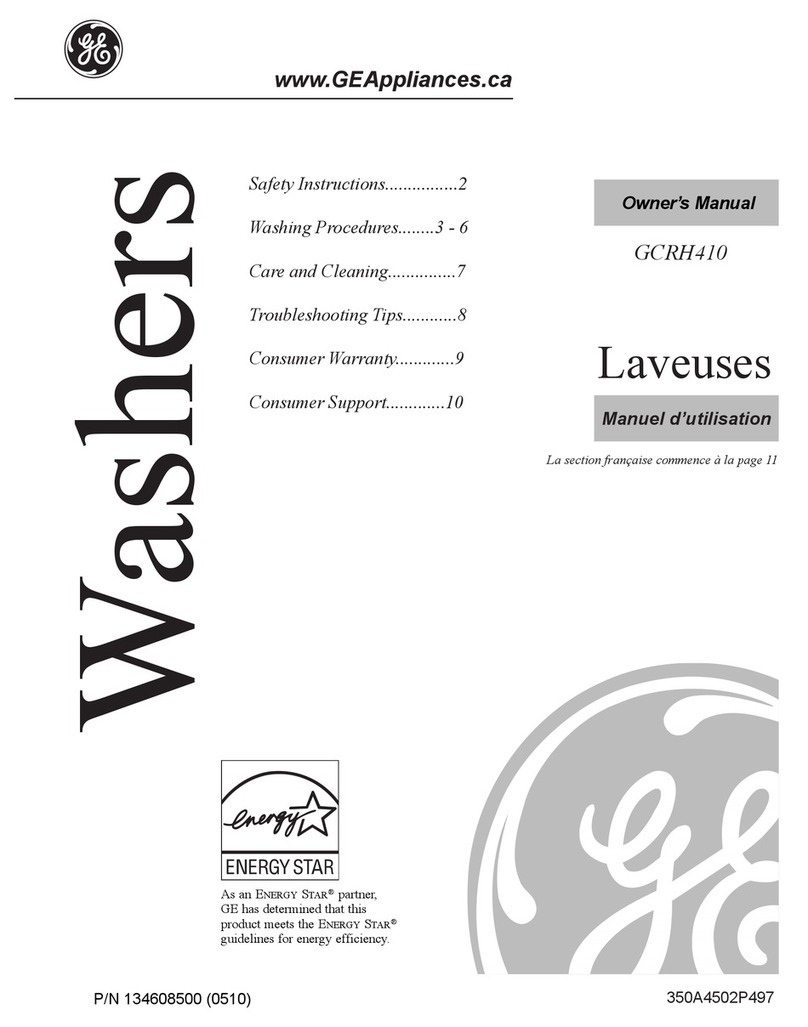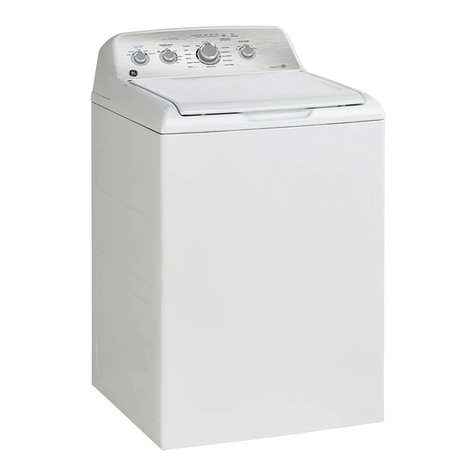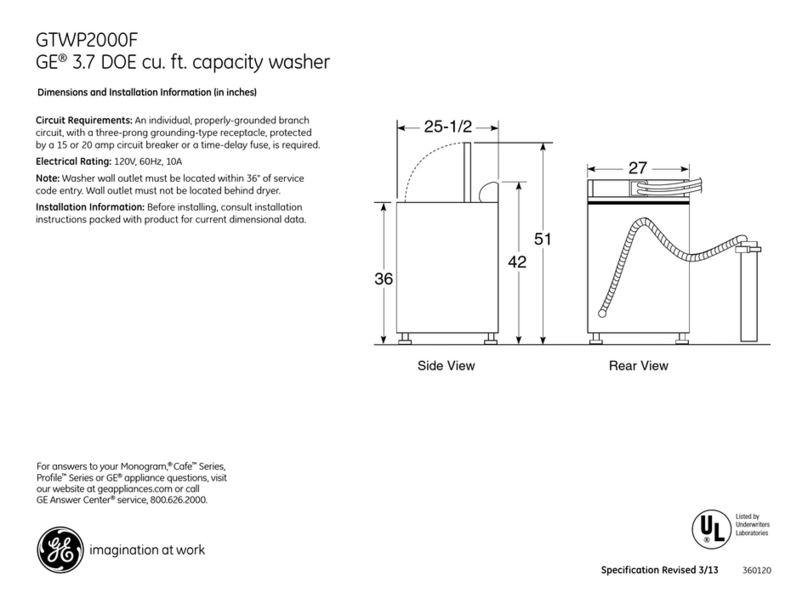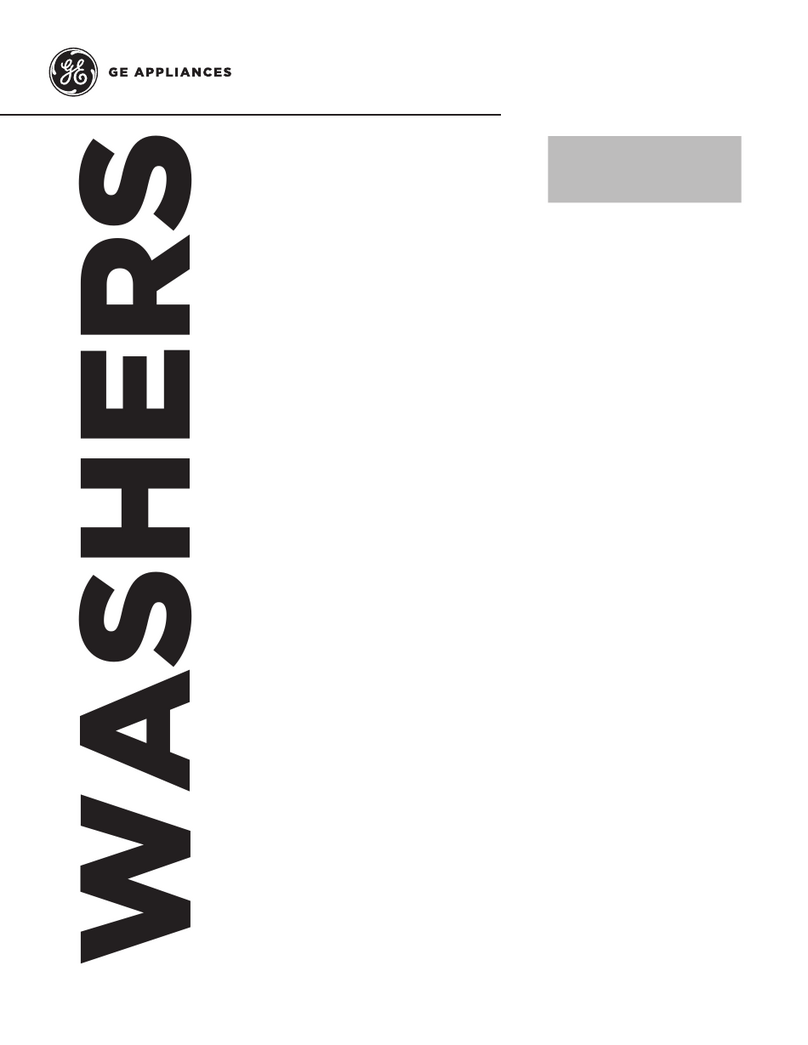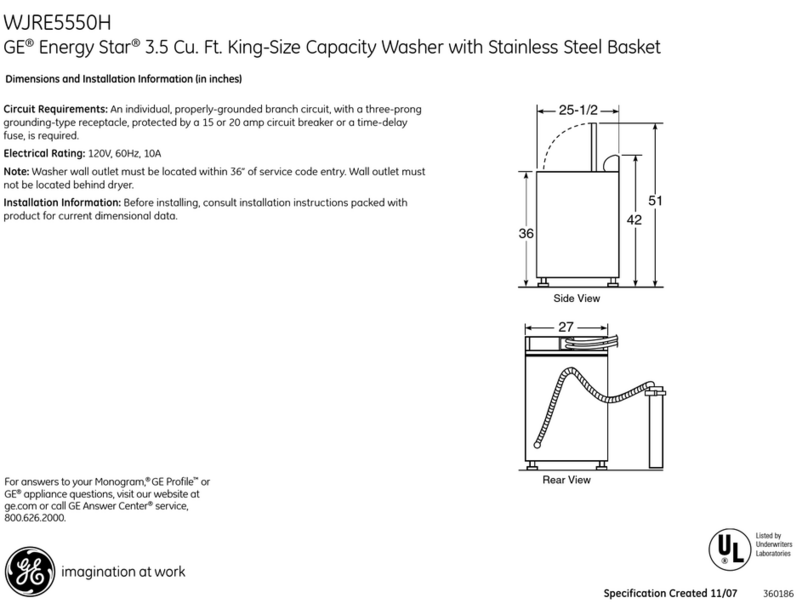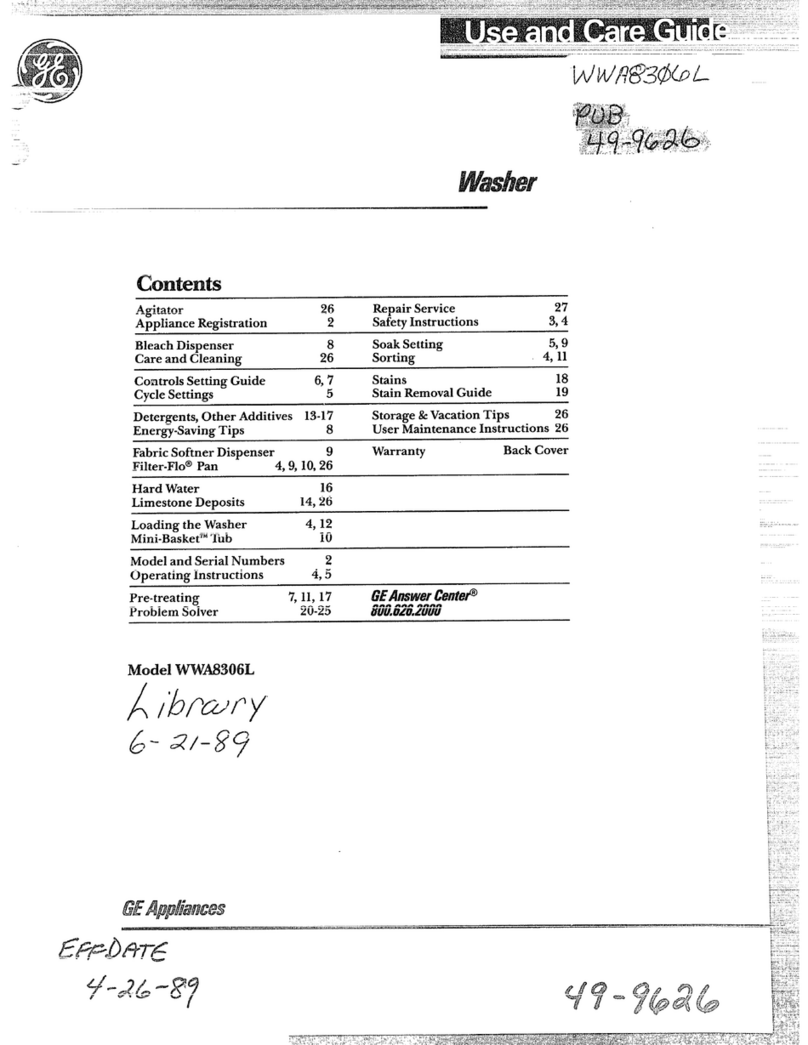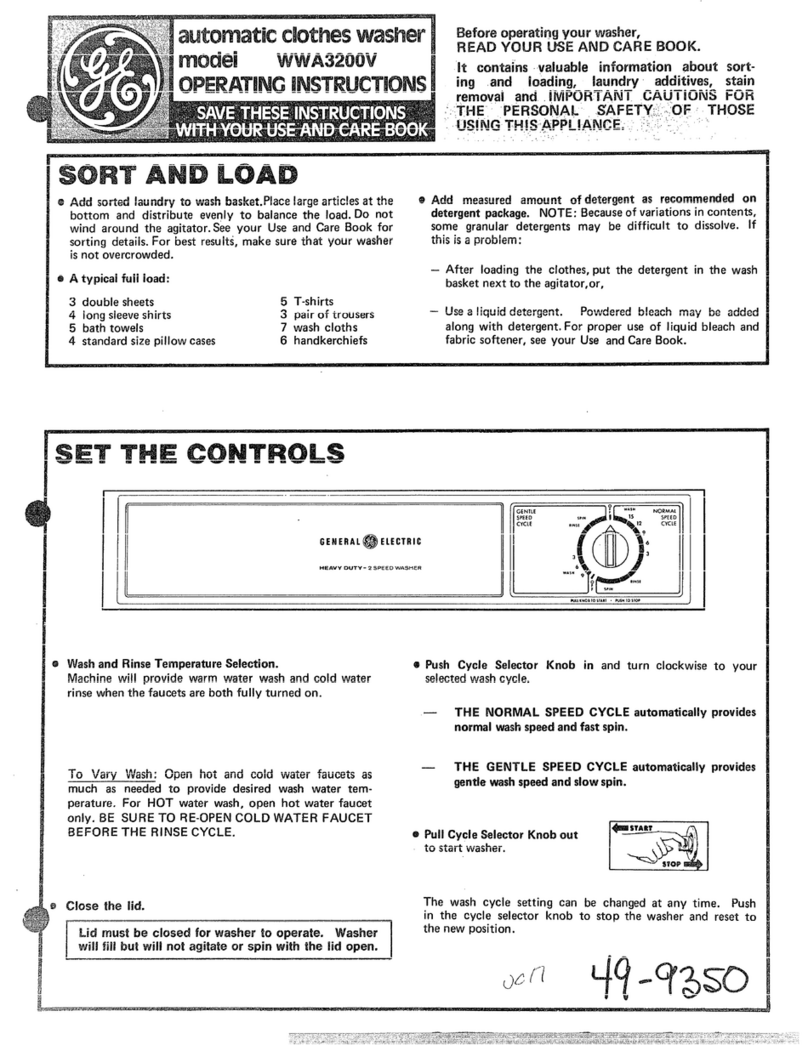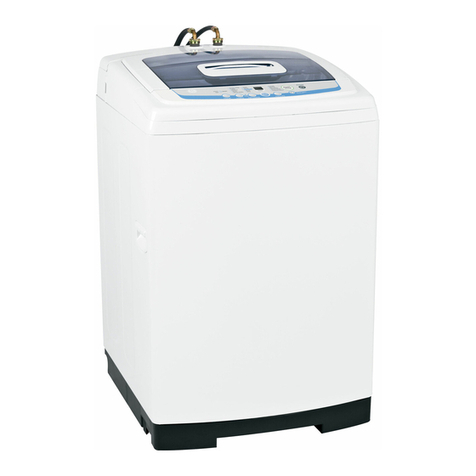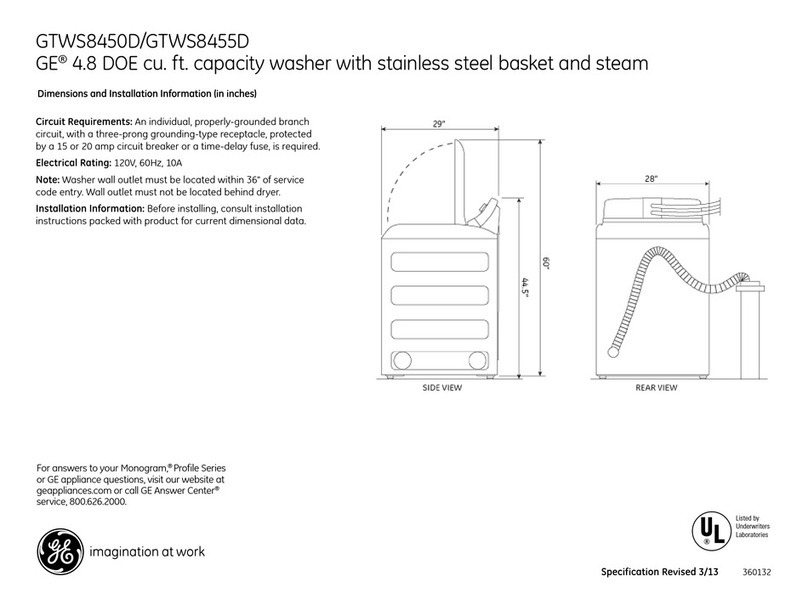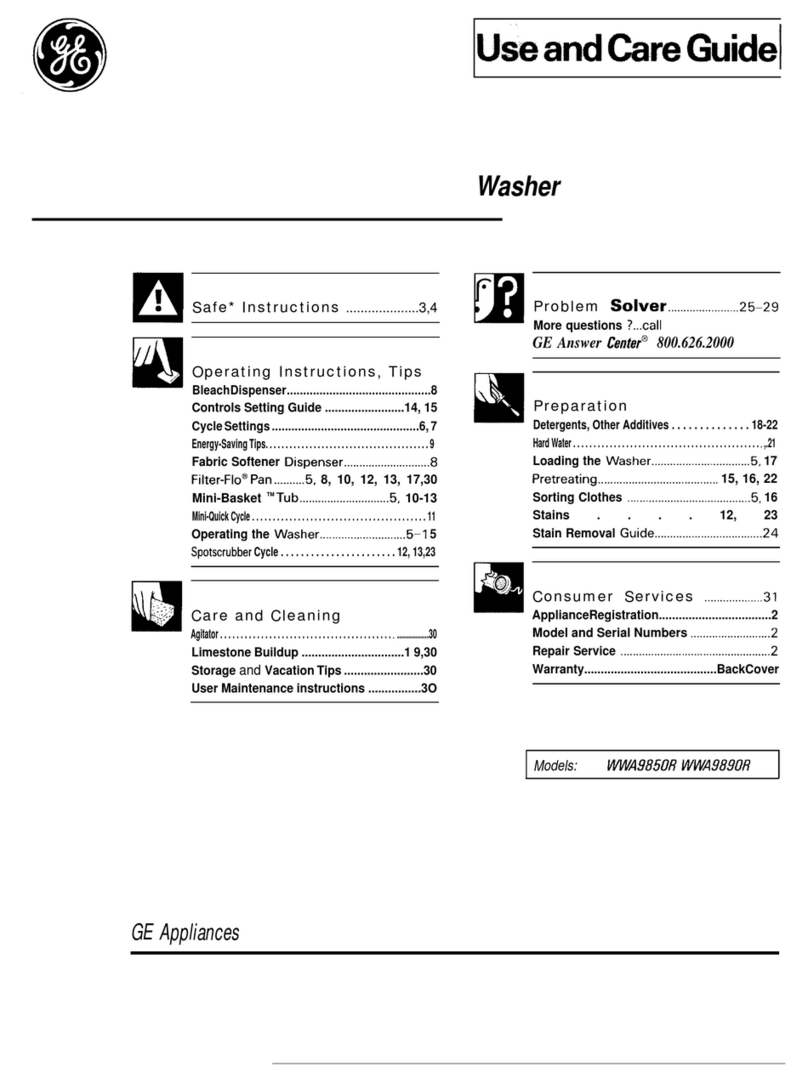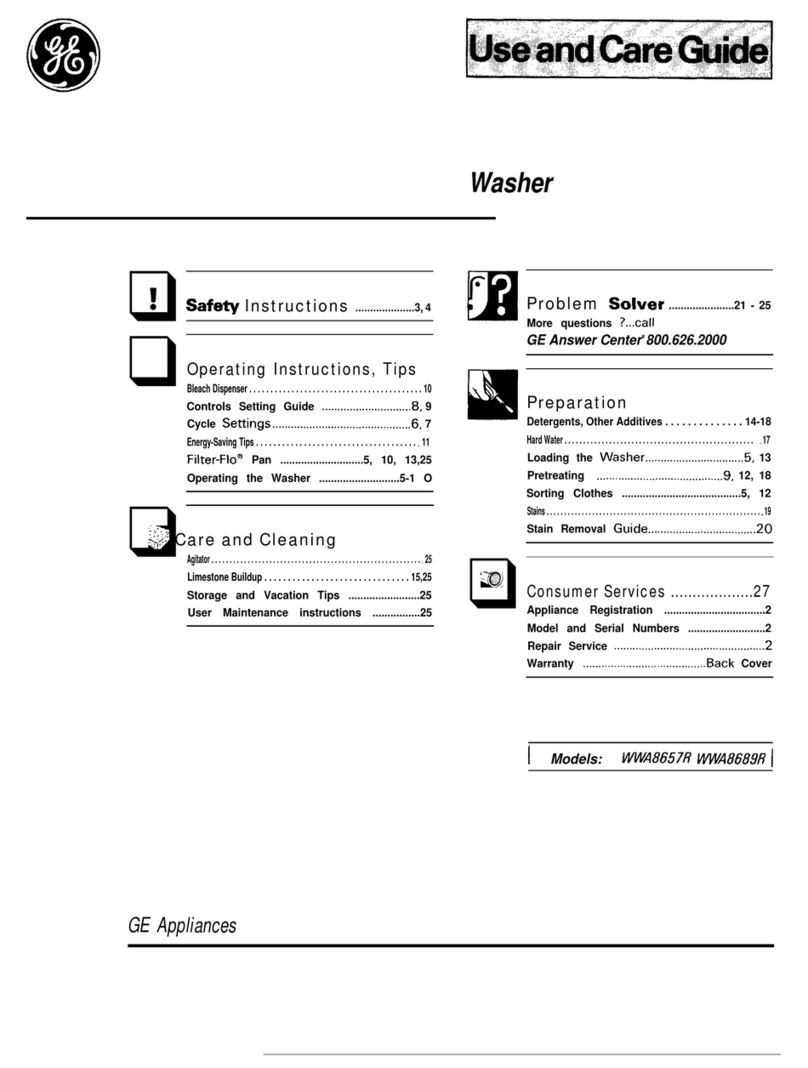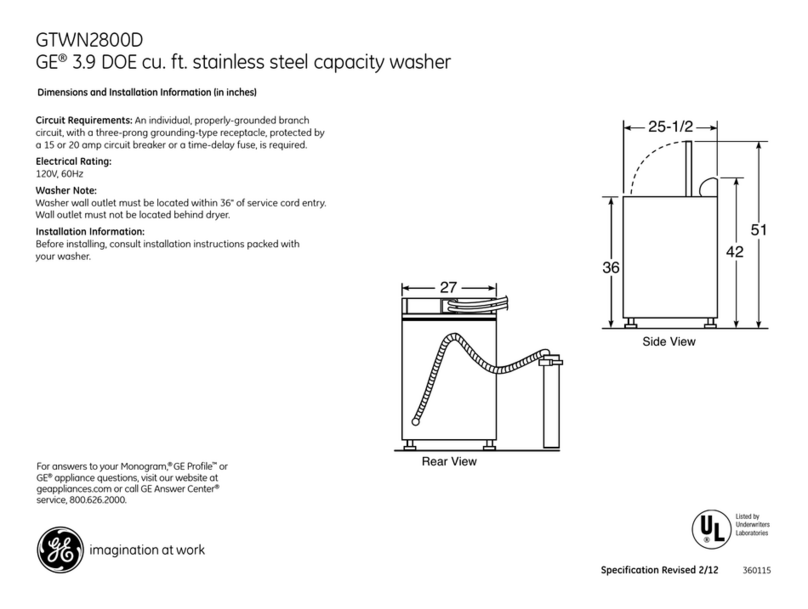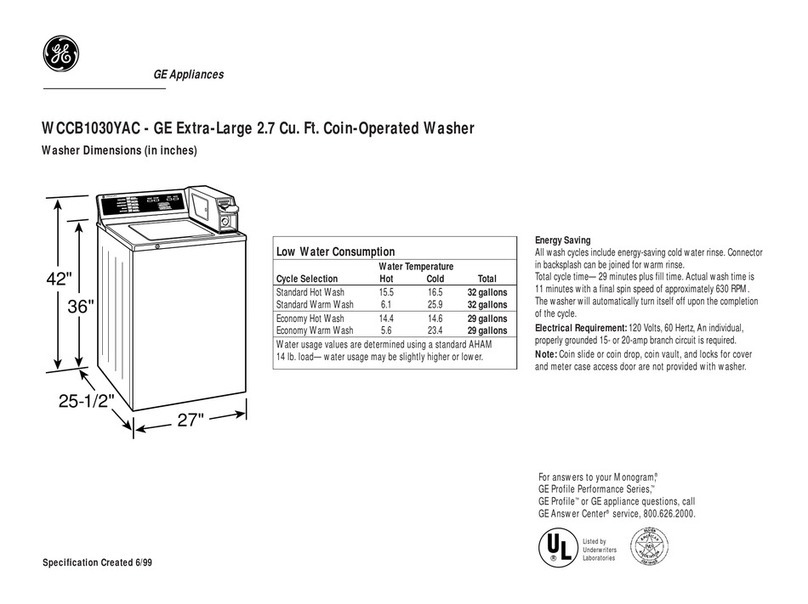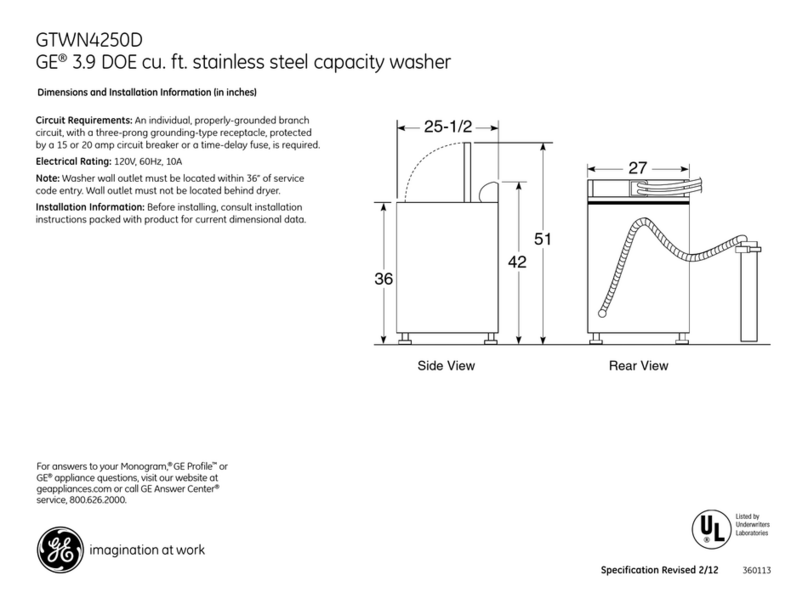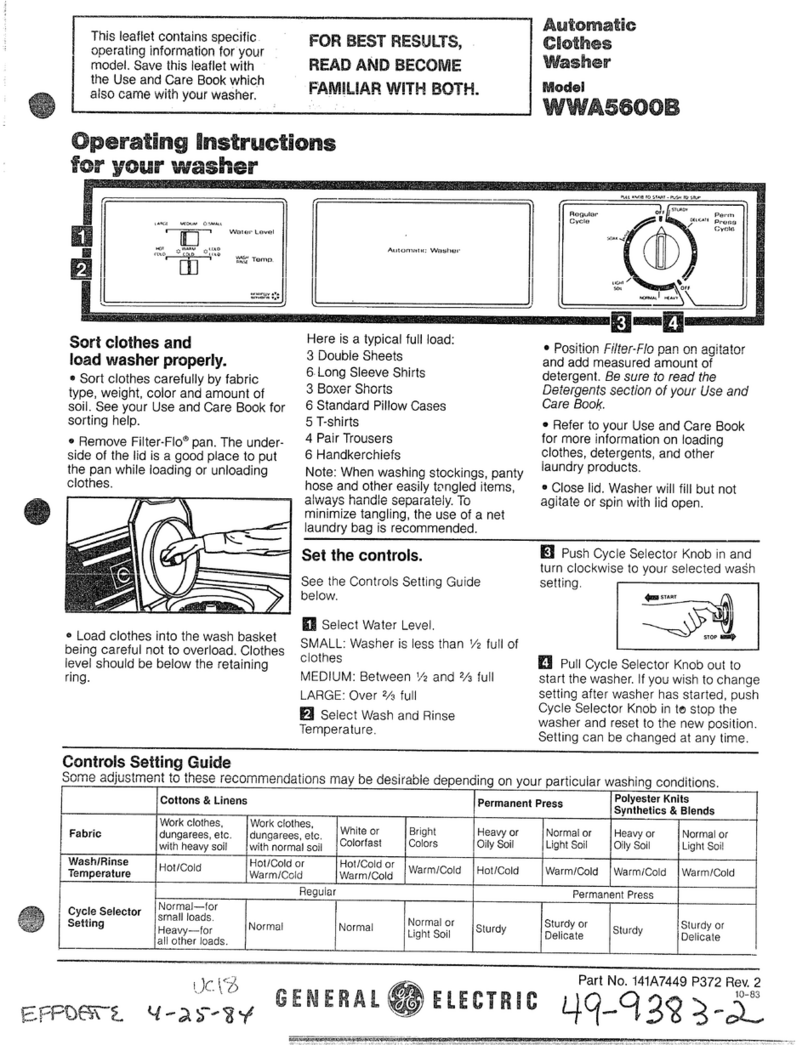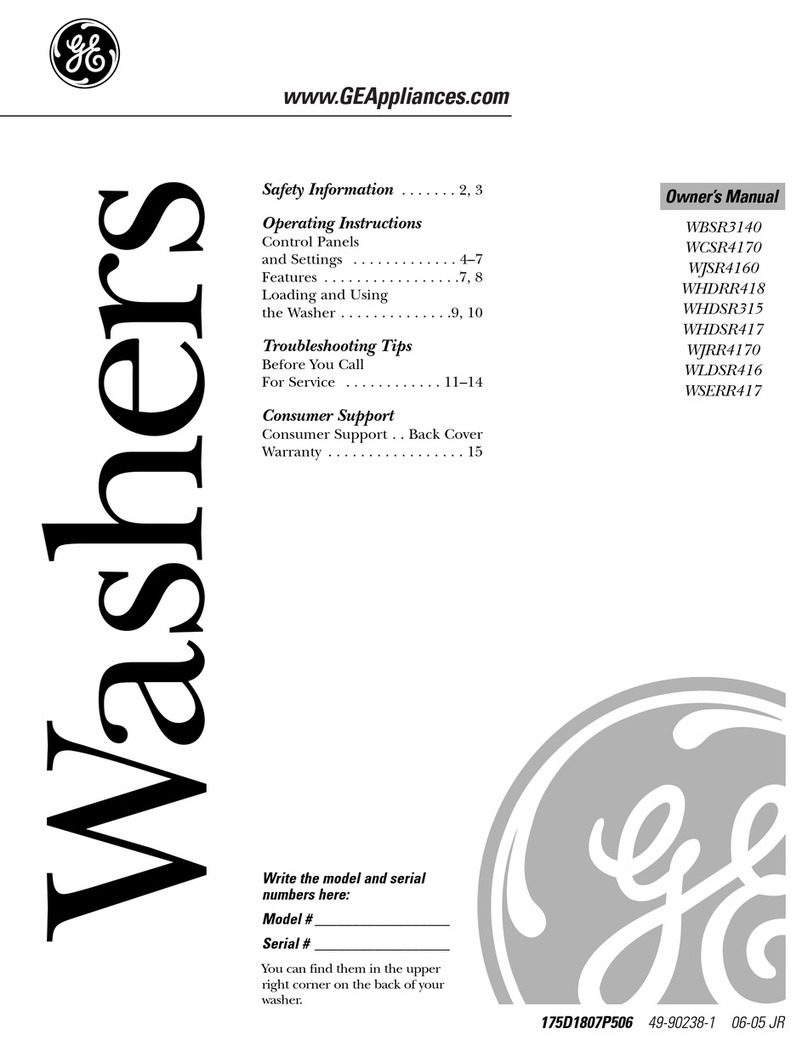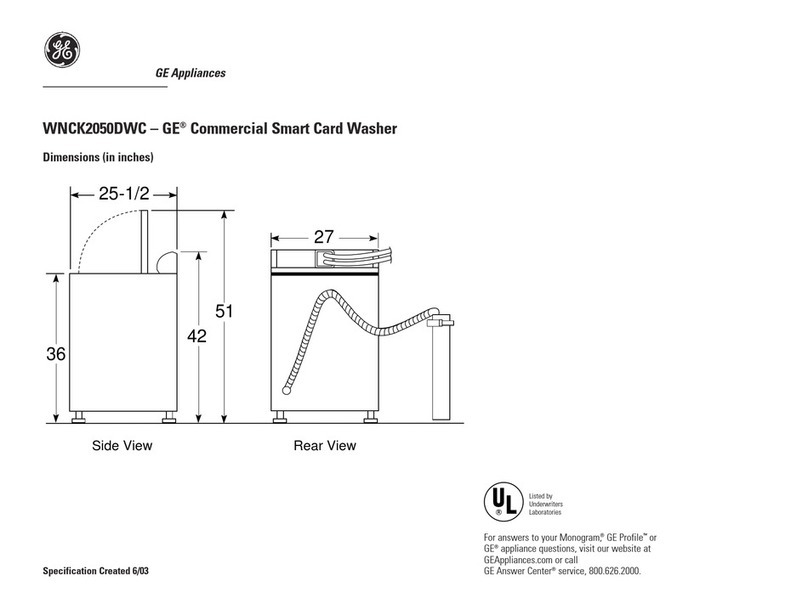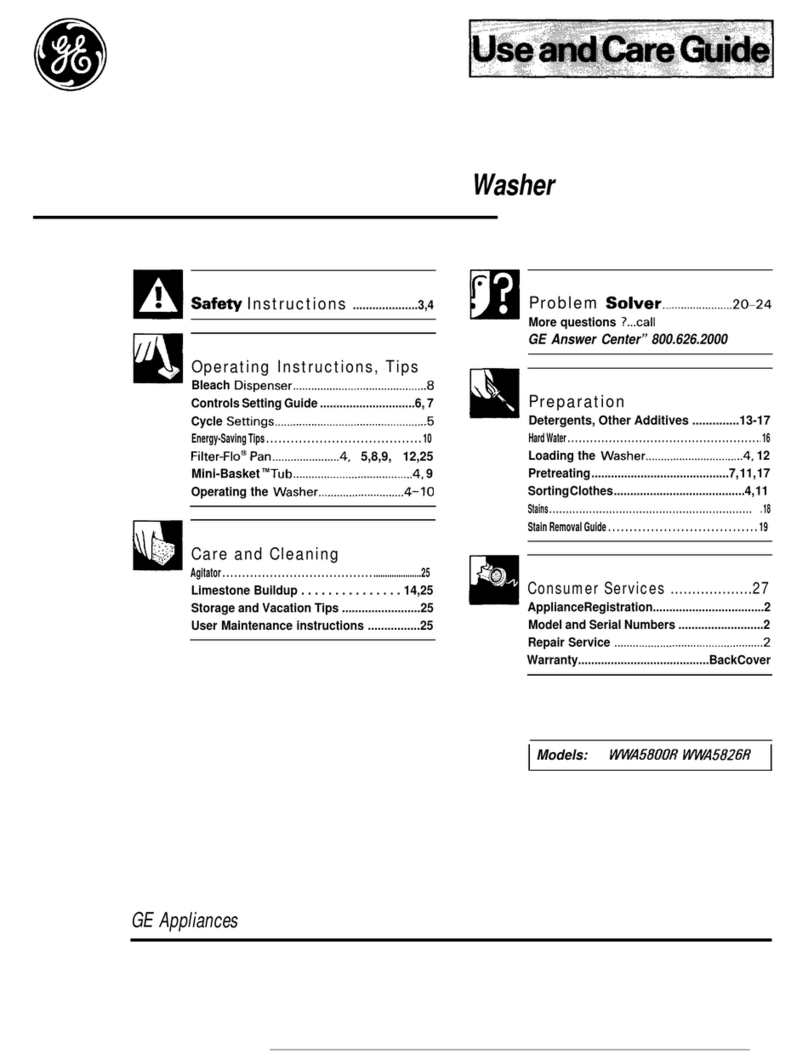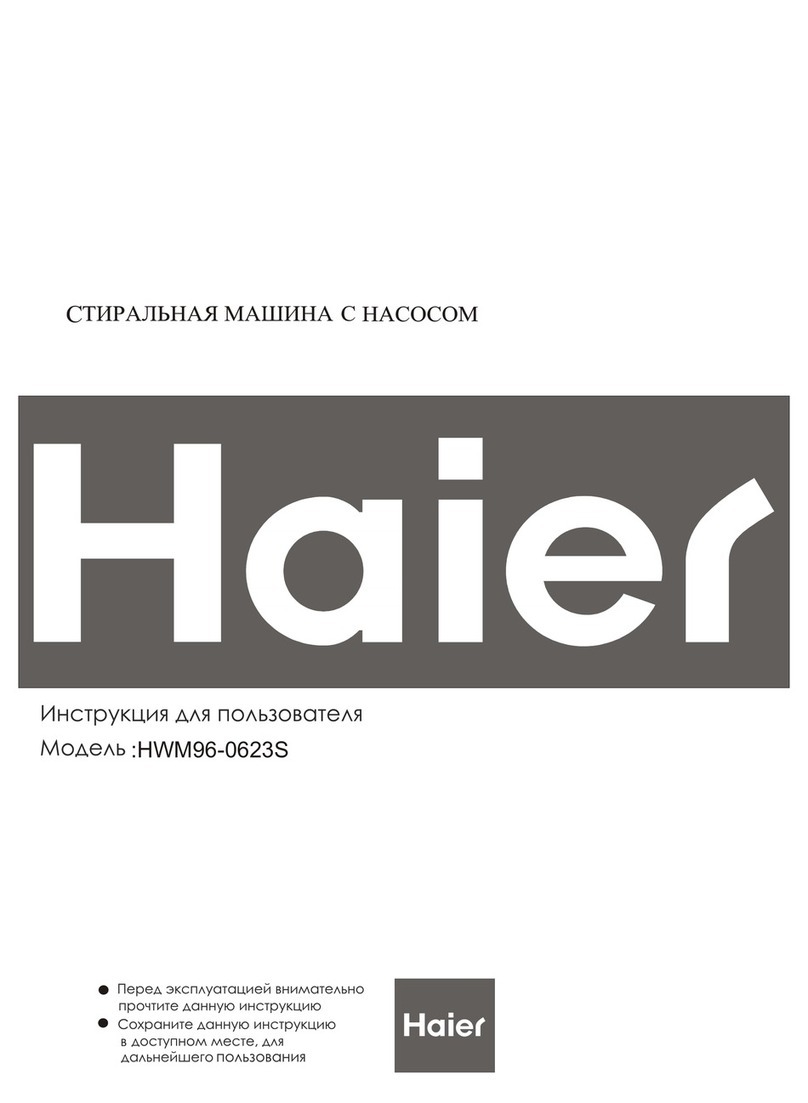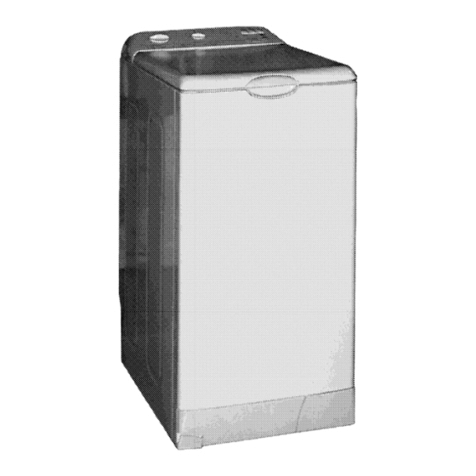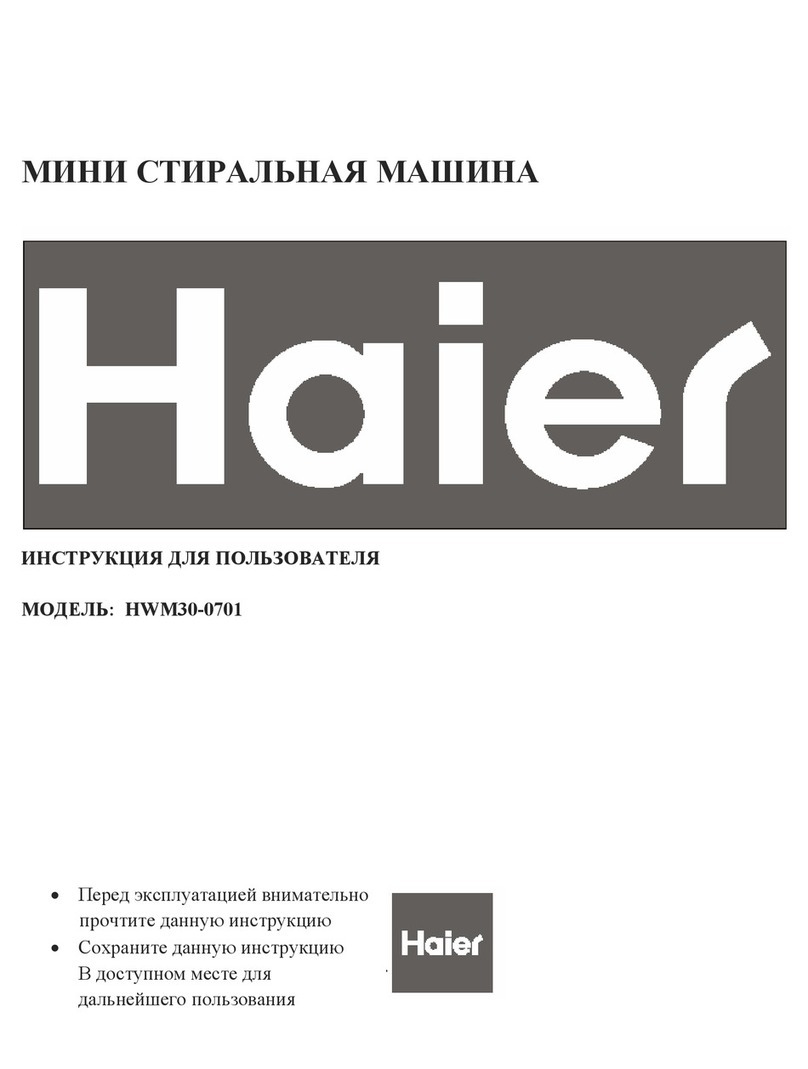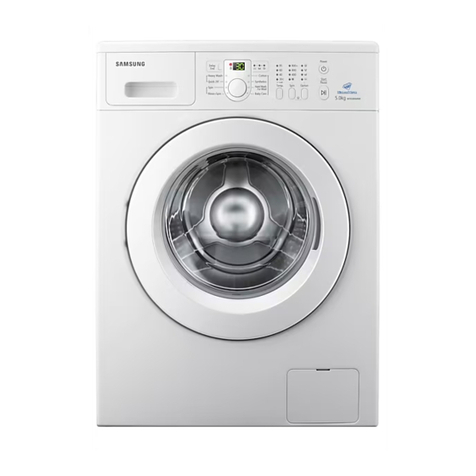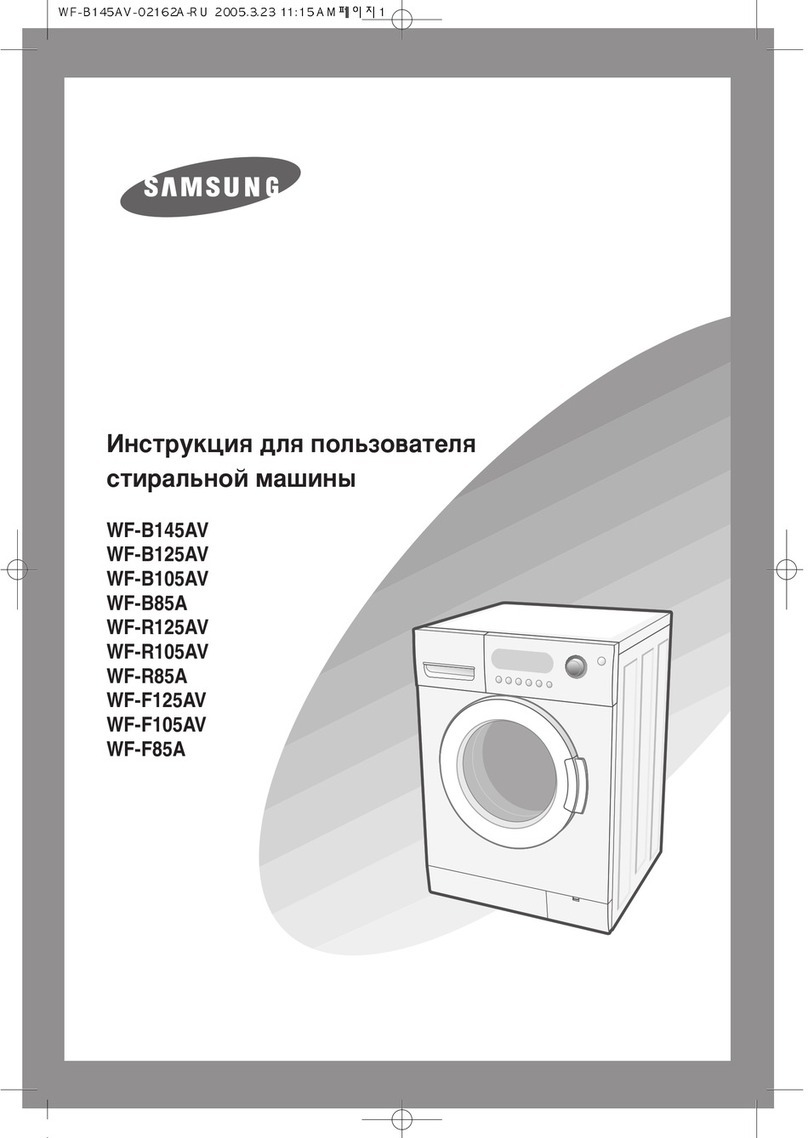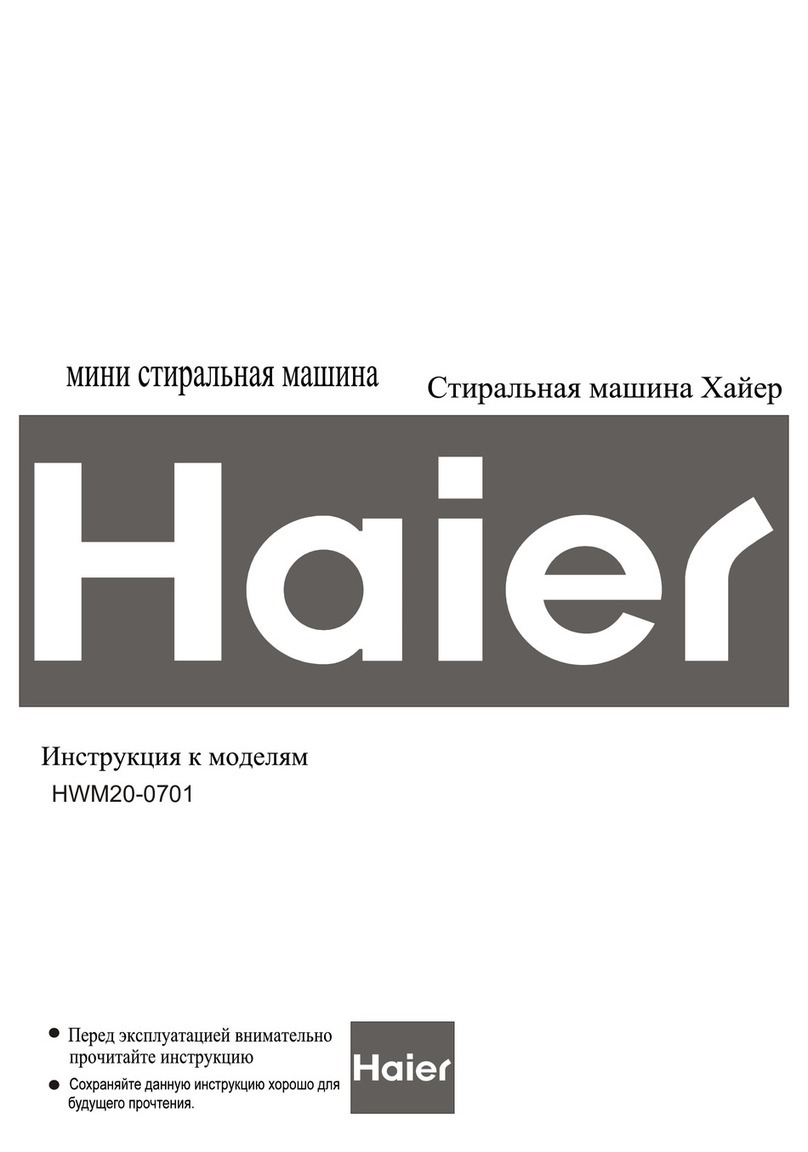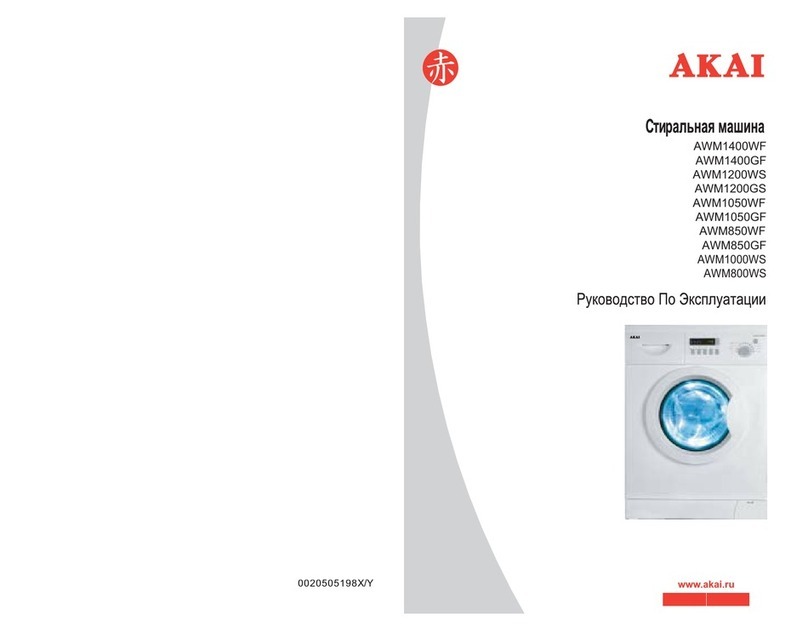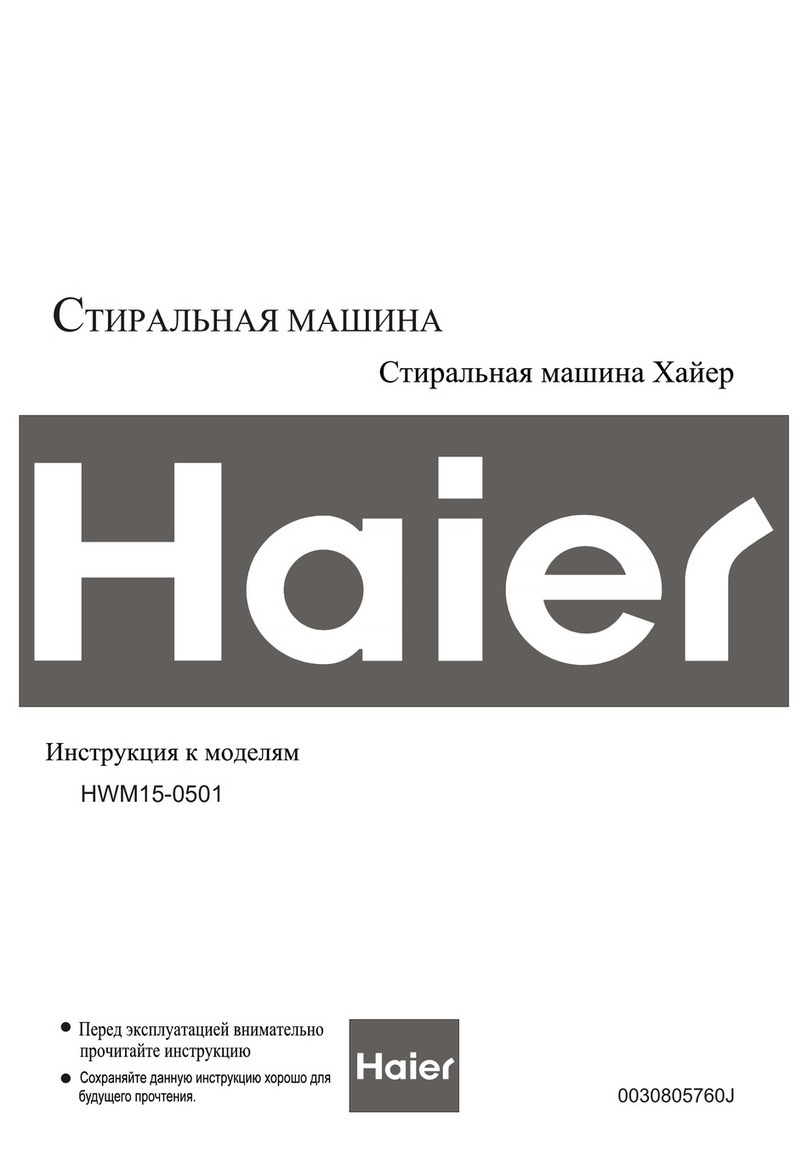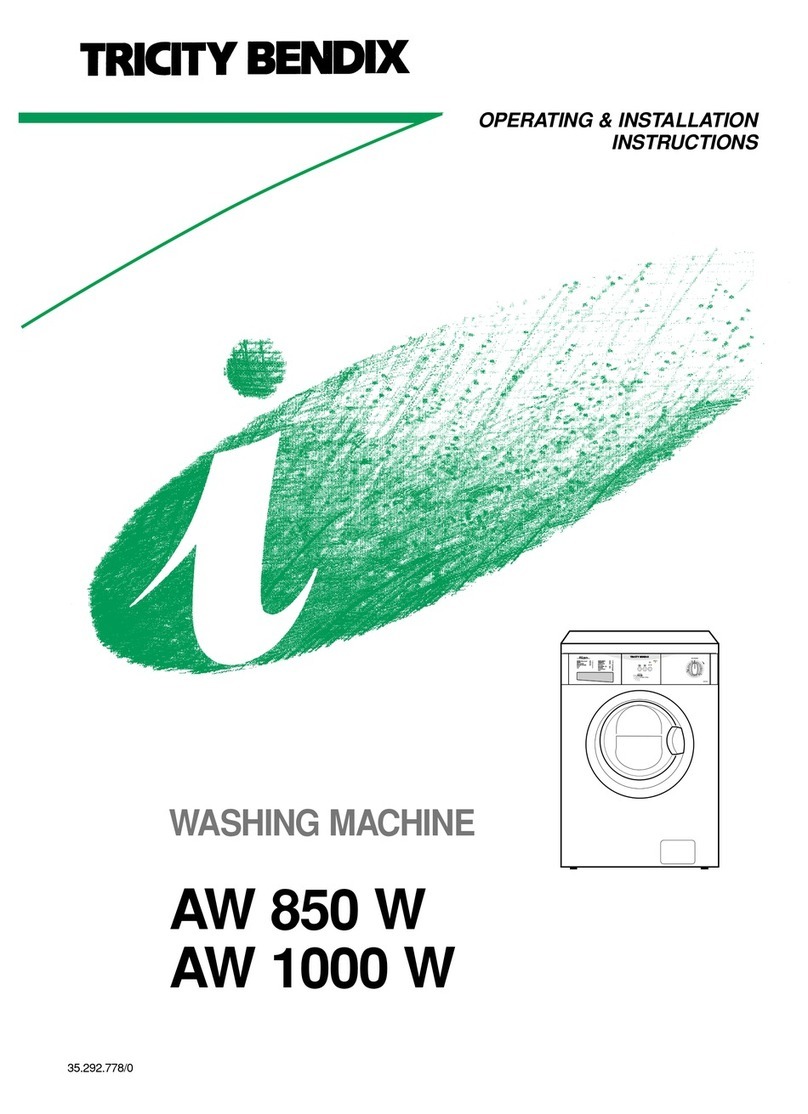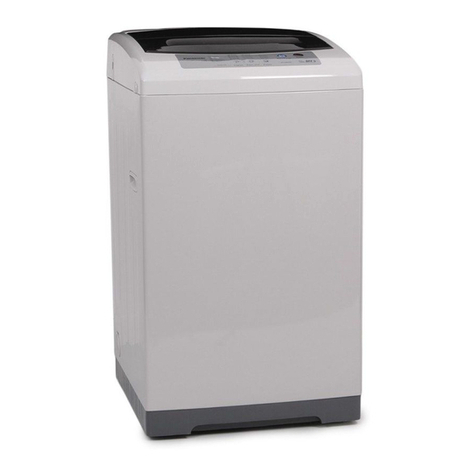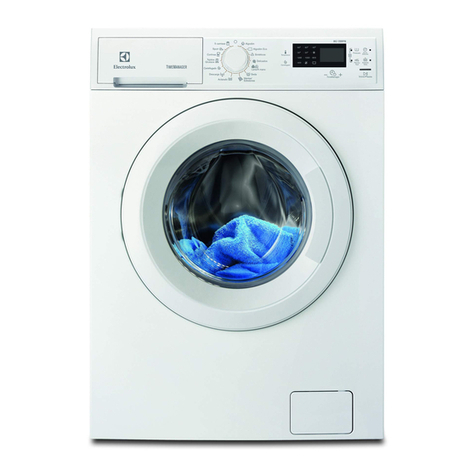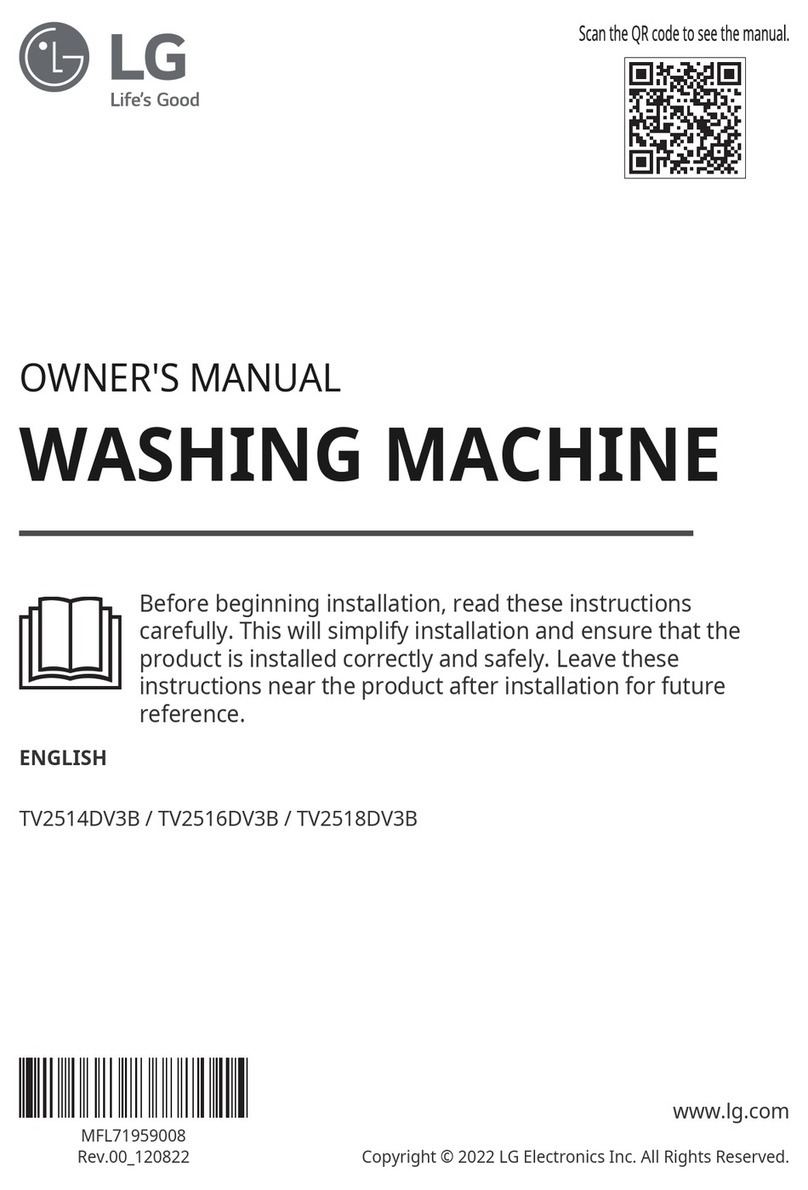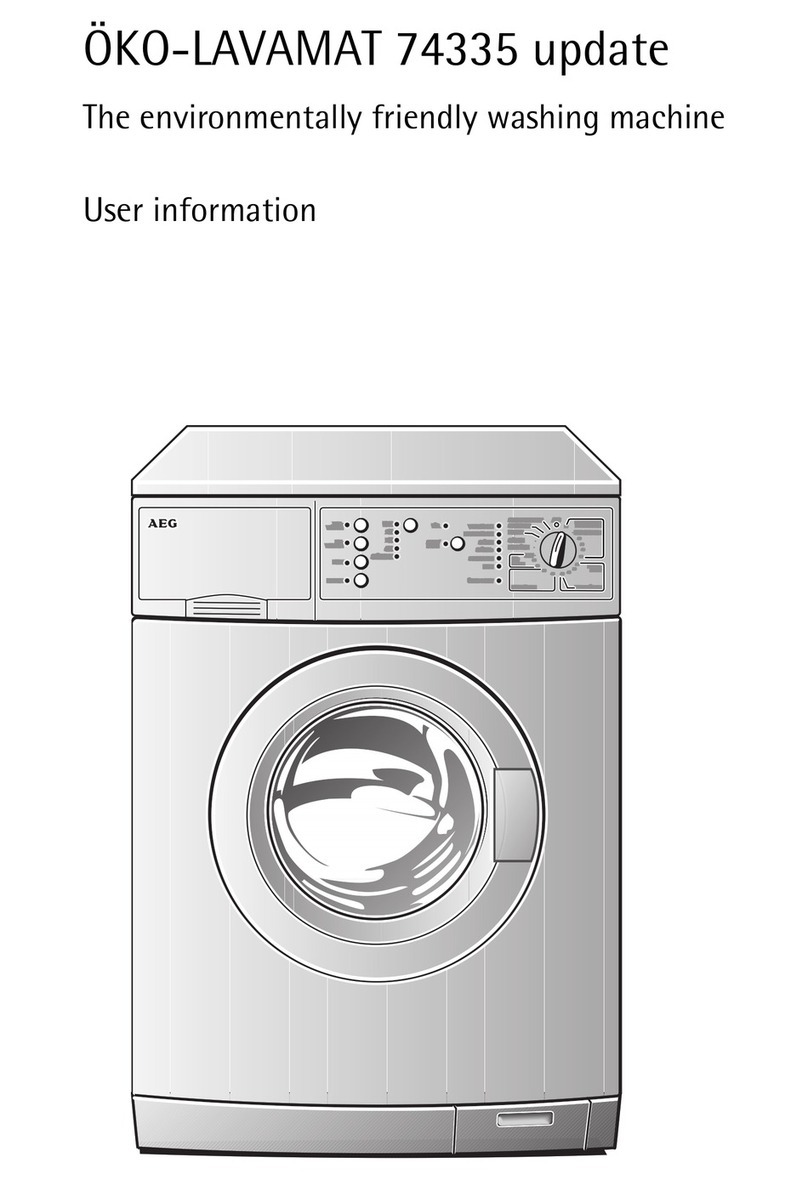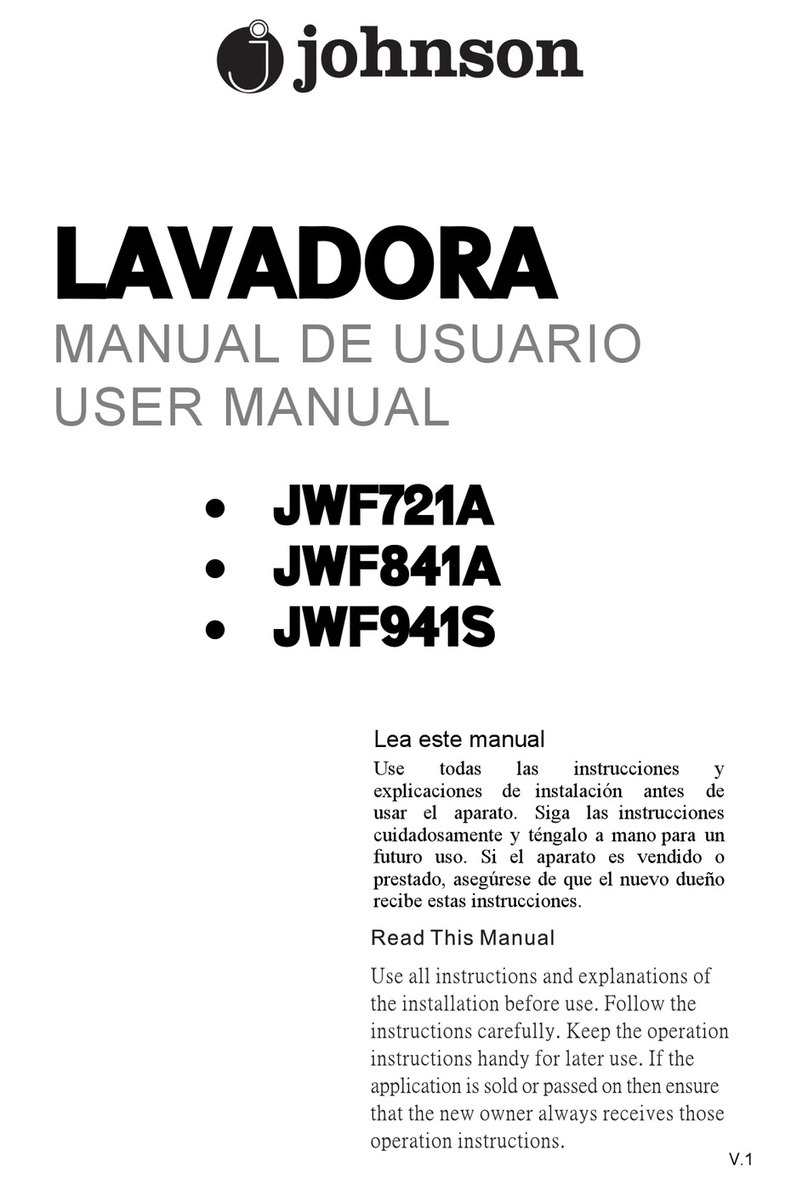m
%
IMPORT.Ai!iTSAFETY LVSTRIKHOXS
Read all ins~r~c~iot-iS before using this appliance.
WARNING-TO reduce the risk of
fire, electric shock, or injury to
personswhen using your appliance,
foilowbasic precautions, inchding
the following:
*Use this appliance only for its
intended purpose as described in
this Use and Care Book.
●This washer must be properly
installedandlocatedin accordance
with the Installation Instructions
beforeit is used. If youdid not
receive an Installation Instructions
sheet with your washer, youcan
ob[ainone bycontacting the service
location nearest you.
—Properly ground to conform
with all governing codes and
ordinances. Follow details in
Installation Instructions.
–Install or storewhere it will not
be exposed totemperatures below
freezingor exposed tothe weather.
–Comect to aproperly rated,
protected and sizedpower supply
circuit to avoidelectrical overload.
–Connect to adequate plumbing
anddrain facilities as described in
theInstallation Instructions.
.Turnoff waterfaucefi when
thewasher is not in use to relieve
pressure on hoses and valves, and to
minimize leakageif ahose or valve
should break or rupture.
●When &c~~ne~~ing ~~is
appliance pull bythe plug rather
than the cord to avoiddamage tothe
cord orjunction of cord and plug.
Make sure that the cord islocated so
that itwill notbe stepped on, tripped
overor otherwise subjected to
damage or stress.
●Do notrepair or replaceany part
of the appliance or attempt any
servicing unless specitlcally
recommendedinthis Use and Care
Book or in published user-repair
instructions that you understand
and havethe skills tocarry out.
Tominimize the possibility
of injury:
●Donot mix chlorine bleach with
ammonia or acids such asvinegar
and/or rust remover. lMixingcan
produce atoxicgas which may
cause death.
.Do not wash or dry artic]es
that havebeen cleaned in, washed
in, soaked in, orspotted with
combustibleorexplosivesubstances
(such as wax, paint, gasoline,
degreasers, dry-cleaning solvents,
kerosene, etc.) which mayignite
or explode.
Do not add these substances tothe
washwater,and do not use these
substances around your washer
and/or dryerduring operation.
W-G-HYDROGEN GASis
produced bythe chemical action
within your waterheater and the
gas can accumulate in the water
heater andlor waterpipes if hot
waterhas not been used for a
period of twoweeks or longer.
HYDROGEN GASCANBE
EXPLOSIVE UNDER THESE
CIRCUMSTANCES.So to prevent
the possibilityof damageor injury,
ifyou have not used hot water for
twoweeks or more, or move into a
residence in which the hot water
systemmay not havebeen used for
some time, turn on all hot water
faucets and allow them to run for
severalminutes beforeusing any
electrical appliance which is
connected tothe hot watersystem.
This will allow any hydrogen gas
toescape. Since the gas is
flammable, do not smoke or use
anopen flame or appliance
during th.ispMIWJ!L
●Never~ch ~to -her w~e
it ismoving. Before loading,
unloading of adding clothes, p&h
in the CycleSelector knob to
“STOP” position, then wait until
the machine has completely
stopped beforeopening the lid.
3
●Close supervision isnecessary
ifthis appliance is used byor near
children. Do not allow children
toplay inside, on or with this
appliance or any discarded
appliance. Dispose of discarded
appliances and shipping or
packing materials properly.
Before discarding awasher,or
removing from service, remove
the washer lid.
cKeepall laundry aids (such a;
detergents,bleaches, fhbricsofteners,
etc.) out ofthe reach ofchildren,
preferablyinalockedcabinet. Observe
allwarnings on container labels to
avoidpersonal injury.
●Keepthe area around and
underneath your appliances free
fiomthe accumulationofcombustible
materials, such as lint, paper, rags,
chemicals, etc.
.Keepthefloor around your
appliances clean and dry toreduce
thepossibility of slipping.
cTominimize the possibility
ofelectric shock, unplug this
appliance from the power supply
before attempting anymaintenance
or cleaning (exceptthe removal and
cleaning ofthe lint filter).
NOITl: Turning the Cycle Selector
knob toan OFF position does N~
discomect the appliance fromthe
power supply.
*Do not tamper with controis.
●Do not operate this appliance
if it isdamaged, malfimctioning,
partially disassembled, or has
missing or broken parts, including
adamaged cord or plug.
●Never c~b on or s~d onhe
El
●RI notwash fiberglass articles in
your washer. Skin irritation co~d ,
resuh fi=omthe remaining particles
that maybe picked up by clothing
during subsequent washer use.
~
